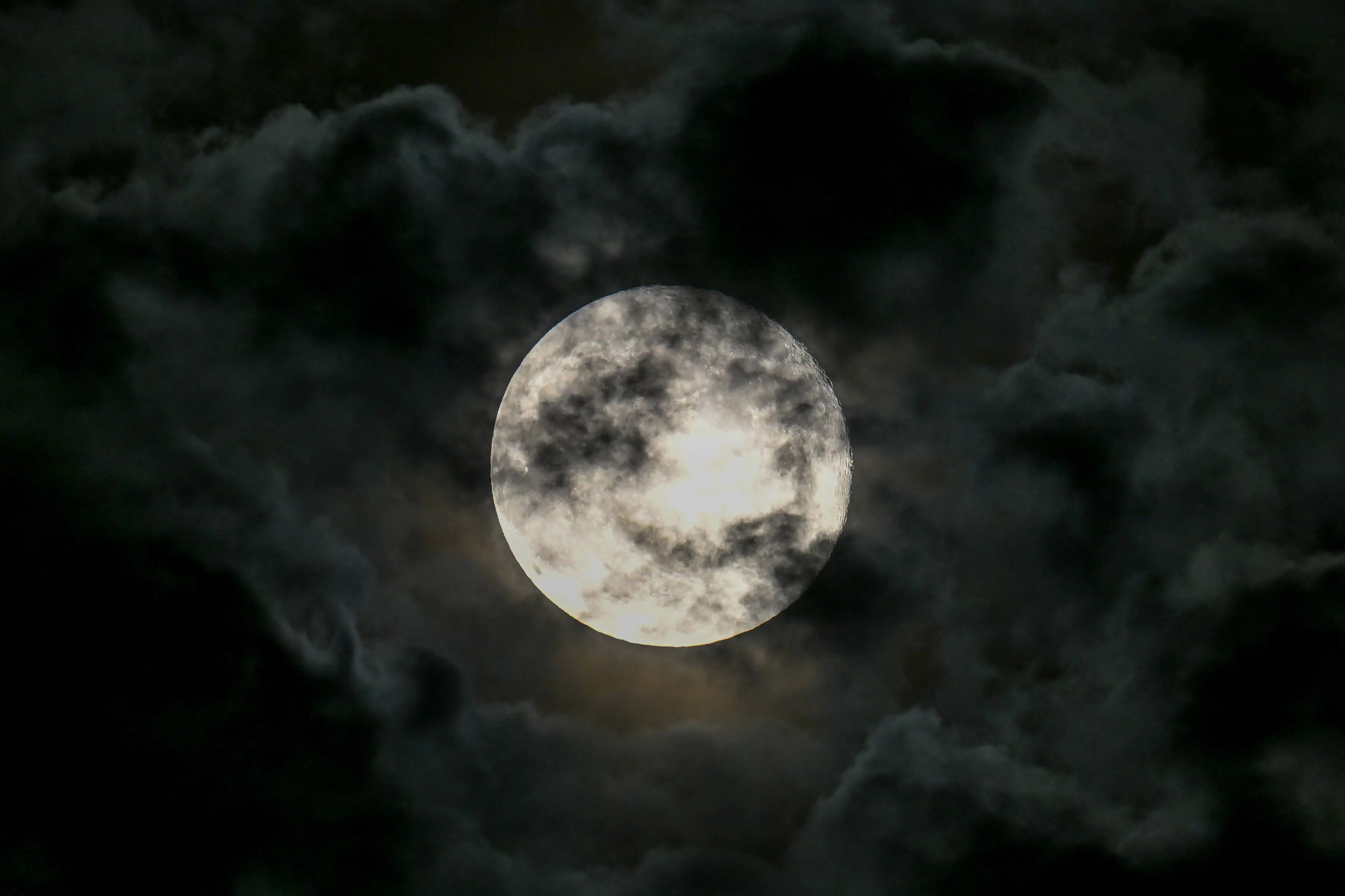Rare Black Moon will rise with the Sun on August 23, 2025, here’s what skywatchers can expect
-
 SAN MATEO, CALIFORNIA - SEPTEMBER 18: Full harvest moon rises over San Francisco Bay during cloudy skies in San Mateo, California, United States on September 18, 2024. (Photo by Tayfun Coskun/Anadolu via Getty Images)
SAN MATEO, CALIFORNIA - SEPTEMBER 18: Full harvest moon rises over San Francisco Bay during cloudy skies in San Mateo, California, United States on September 18, 2024. (Photo by Tayfun Coskun/Anadolu via Getty Images)The night sky always seems to give us a reason to stop and look upward, and later this month another rare opportunity will occur. On Saturday, August 23, 2025, there will be a Black Moon. Unlike the full moons that lighten the night sky, this new moon will rise with the Sun, making it very hard to see.
Even if it is not going to be seen in the way people have come to expect, the Black Moon is still piquing the interest of astronomers and skywatchers alike.
A Black Moon is not something that most skywatchers get to see. Black Moon is the term used for the second new moon in a month.
Since new moons are already dark and hidden in the glare of the sun, this makes the Black Moon even more difficult to notice. Still, it means something to astronomers because of its timing, and how it reinforces this rhythm of the lunar cycle. For many skywatchers, just knowing when it is happening adds to the joy of following the sky.
What the Black Moon means and why it is rare
All phases of the lunar cycle in one frame pic.twitter.com/zXJVGsw7Sv
— Science And Nature (@InterestingSci1) May 19, 2025A Black Moon is a fairly rare occurrence. In fact, most individuals will only see a Black Moon every few years. A Black Moon happens because the lunar calendar does not exactly line up with the calendar months we are familiar with.
A Black Moon only happens when two new moons fall in the same calendar month; the second new moon is called a Black Moon.
This is different than a Blue Moon, which happens when there are two full moons in the same month. Both "Black Moon" and "Blue Moon" are not technical astronomy terms but have become common in skywatching aficionado circles.
The unusual part about the Black Moon event of August 23 is that it will rise at the same time as the sun. This means it will be completely obscured by the daytime sky, and even with a telescope you would not be able to see the moon with the naked eye.
Even though you likely will not see the Black Moon itself, it is still part of the ongoing cycle of the Moon that continues to happen.
On each of the following nights that follow this event, a thin crescent moon will appear again in the evening sky, marking the start of a new lunar phase again.
How the Black Moon fits into the lunar cycle
The Moon has a cycle that lasts 29.5 days. Starting at new moon it builds to full moon, then back to new moon. The Moon cycle has been a useful calendar, farming, and cultural tool for thousands of years.
A Black Moon is simply an obscure detail of the Moon's cycle. While it doesn't create any real change on Earth, it reminds us how time and the lunar cycle are intertwined. For the astronomer, it's an opportunity to study the Moon's elliptical orbit. For the average person looking up, it is just another way to appreciate the moving story of the Moon.
There are also some cultural and folklore traditions that give further meaning to the Black Moon. Some may see it as a time of renewal or fresh starts.
Science has no connection to the Black Moon and the ideas surrounding it, but nevertheless, fascination around the Black Moon demonstrates how people still find ways to connect intimately with the Moon.
What skywatchers can expect during this Black Moon
A Black Moon rises with the Sun on August 23, so there won't be anything out there to look at that morning. For those who hoped to see the Moon, the best time will be in the following days when a thin crescent starts to develop in the night sky. That crescent marks the Moon's return after being invisible. Astronomers remind us that even events not seen can still be valid.
The Black Moon is another example of how the Moon's orbit provides opportunities to observe moments that stand out on the calendar. It won't provide a spectacle like an eclipse or meteor shower, but it is still a fabulous component of the narrative of how we measure time in a sky.
This event requires no special tools for anyone wishing to track it, but marking your calendar should allow for greater recognition of the Moon's phases in the following days. The Black Moon also reminds us how many different ways our sky may surprise us, even if there will be nothing for us to see.
The Black Moon on August 23, 2025, is not going to light up the night sky or create a spectacular view, but as part of the lunar cycle, it is still a very rare occurrence. It will not be visible (dark moon), but its timing is interesting because it is another moment to remind of the constant cycle of the Moon and the way it helps to define the way we have come to understand time and space.
Stay tuned for more updates on upcoming celestial events in the months ahead.
TOPICS: Black Moon